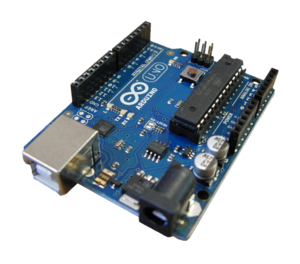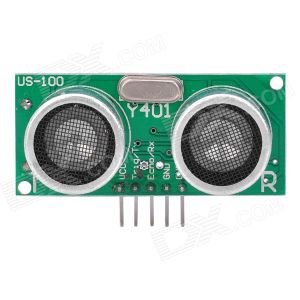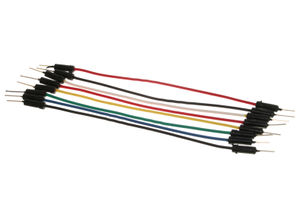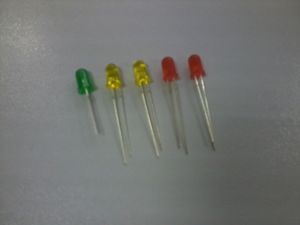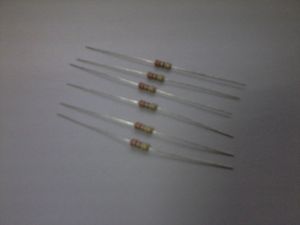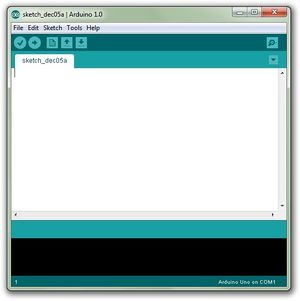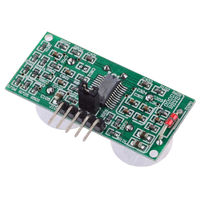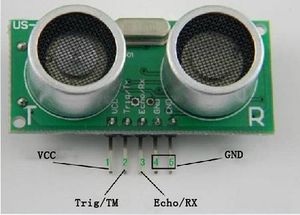Proximity Sensor via Ultrasonic Sonar Module: Difference between revisions
No edit summary |
No edit summary |
||
| Line 58: | Line 58: | ||
1. Prepare all the materials. | 1. Prepare all the materials. | ||
2. Put the corresponding components onto the breadboard. Make sure that the pins of the components are properly put to ensure the efficiency of the circuit. | 2. Put the corresponding components onto the breadboard. Make sure that the pins of the components are properly put to ensure the efficiency of the circuit. | ||
3. There are 5 pins of the US-100. From the back facing yourself, the 2 pins form the left are '''GROUND'''. The third pin from the left is the '''ECHO''', followed by the '''TRIGGER''' and lastly, the rightmost one, the '''VCC''' or the power. | 3. There are 5 pins of the US-100. From the back facing yourself, the 2 pins form the left are '''GROUND'''. The third pin from the left is the '''ECHO''', followed by the '''TRIGGER''' and lastly, the rightmost one, the '''VCC''' or the power. | ||
[[File:US100_BACK.jpg|200px]] [[File:US_100_FRONT.jpg|300px]] | [[File:US100_BACK.jpg|200px]] [[File:US_100_FRONT.jpg|300px]] | ||
4. Connect the TRIGGER pin to '''Pin 6''' of the Arduino. Connect the ECHO pin to '''Pin 7''' of the Arduino. Make a connection between the 2 GROUND pins and connect it to '''GROUND pin''' of the Arduino. Also connect the VCC or power to the '''5V pin''' of the Arduino. | |||
[[File:PINNINGS.jpg|400px]] | |||
5. For the indication purposes, you will connect 3 LEDs and a small buzzer. The GROUND pins of the LEDs and piezo buzzer will be connected to the GROUND pin of the US-100. The ANODE pins of LED1 to '''pin 8''', LED2 to '''pin 9''', LED3 to '''pin 10''', LED4 to '''pin11''' and LED5 to '''pin12'''. | |||
6. Have the code for the given circuit, use the Arduino 1.0.5 to program the operation of the circuit. See the code below and just copy and paste it on the Arduino 1.0.5. | |||
[[File:Code_for_Proximity.pdf]] | |||
7. Verify the code that you program. As it was verified, upload the code to the arduino and you can now test the capabilities of the proximity sensor. | |||
Revision as of 09:22, 22 April 2014
Part of the Sensors and Controls Project, this Arduino micro-based Proximity Sensor integrates of an Ultrasonic Sonar module. With this, one can easily monitor if there's someone near or around a specific area, say, room, door, gate.
I. OBJECTIVES
- To make an Arduino based Proximity sensor via Ultrasonic Sonar module
- To simulate effectiveness by varying distances
II. MATERIALS & COMPONENTS
- Arduino micro/ Arduino UNO
- Ultrasonic Sonar Module (US-100)
- Jumper wires
- 5 (Light Emitting Diodes) LEDs
- 6 330K ohms Resistors
- Piezo Buzzer
- Computer (with Arduino 1.0.5 Software)
III. PROCEDURES
1. Prepare all the materials.
2. Put the corresponding components onto the breadboard. Make sure that the pins of the components are properly put to ensure the efficiency of the circuit.
3. There are 5 pins of the US-100. From the back facing yourself, the 2 pins form the left are GROUND. The third pin from the left is the ECHO, followed by the TRIGGER and lastly, the rightmost one, the VCC or the power.
4. Connect the TRIGGER pin to Pin 6 of the Arduino. Connect the ECHO pin to Pin 7 of the Arduino. Make a connection between the 2 GROUND pins and connect it to GROUND pin of the Arduino. Also connect the VCC or power to the 5V pin of the Arduino.
5. For the indication purposes, you will connect 3 LEDs and a small buzzer. The GROUND pins of the LEDs and piezo buzzer will be connected to the GROUND pin of the US-100. The ANODE pins of LED1 to pin 8, LED2 to pin 9, LED3 to pin 10, LED4 to pin11 and LED5 to pin12.
6. Have the code for the given circuit, use the Arduino 1.0.5 to program the operation of the circuit. See the code below and just copy and paste it on the Arduino 1.0.5.
7. Verify the code that you program. As it was verified, upload the code to the arduino and you can now test the capabilities of the proximity sensor.
IV. SIMULATION
V. OTHER PHOTOS
VI. REFERENCES
